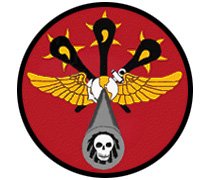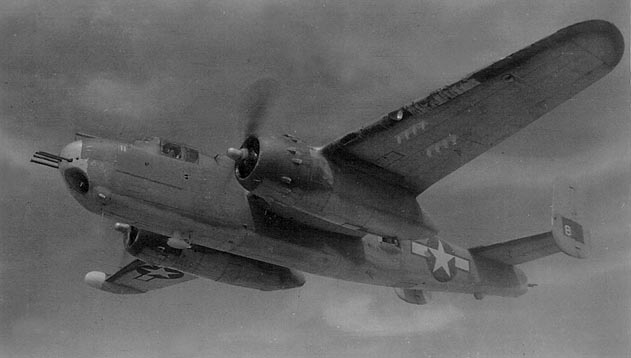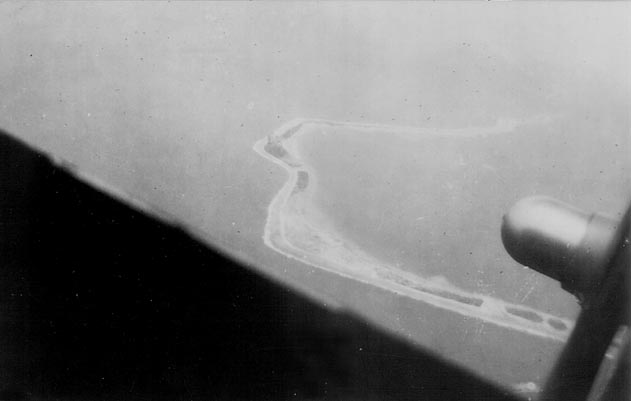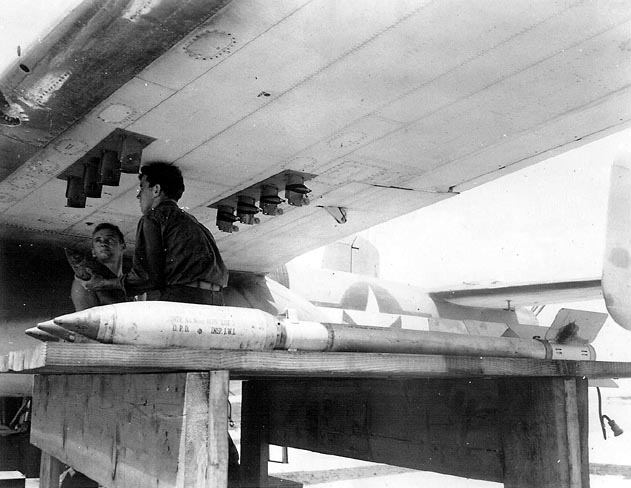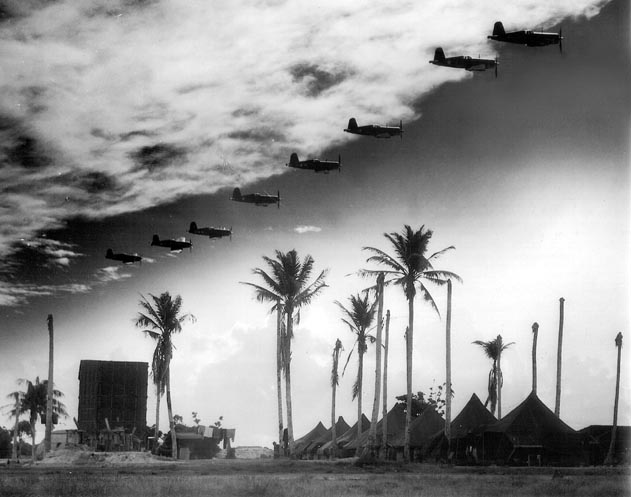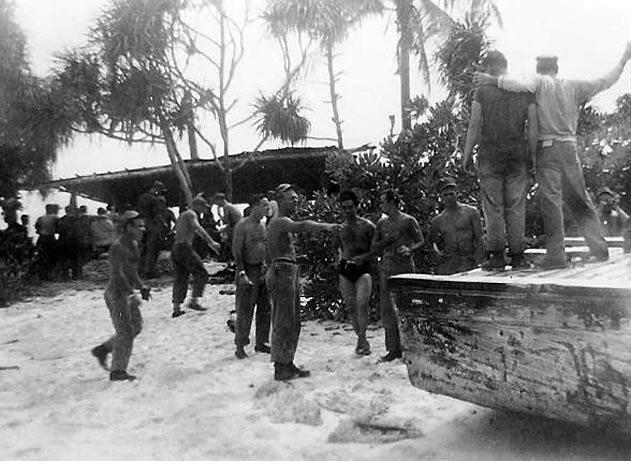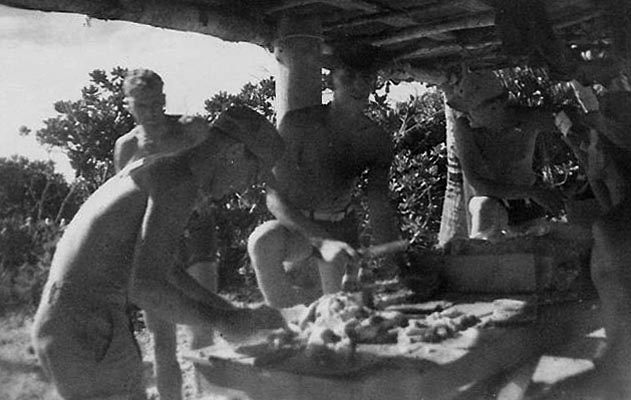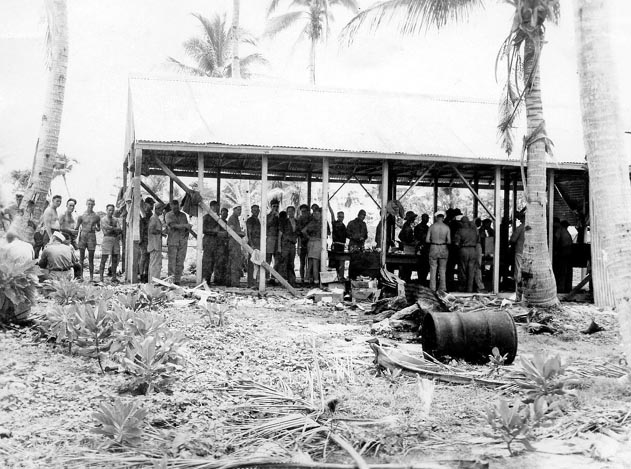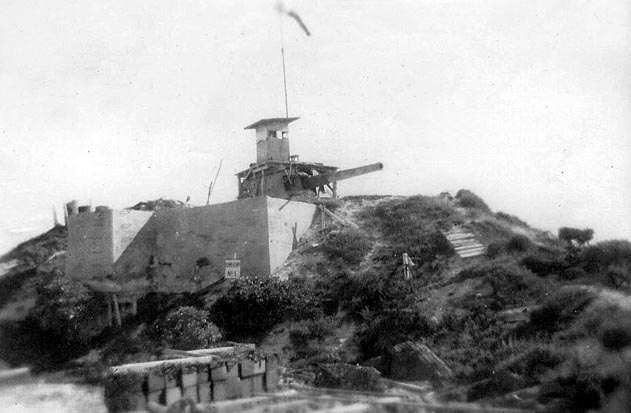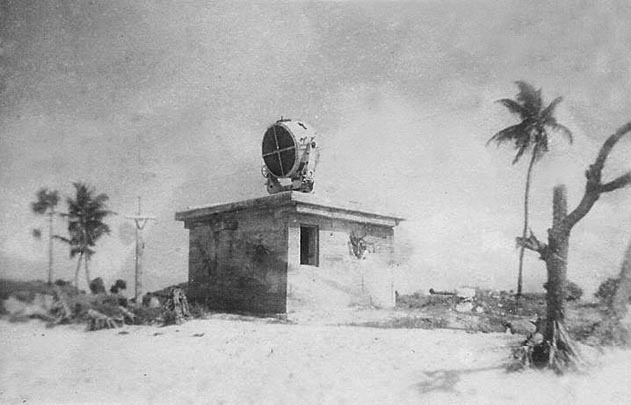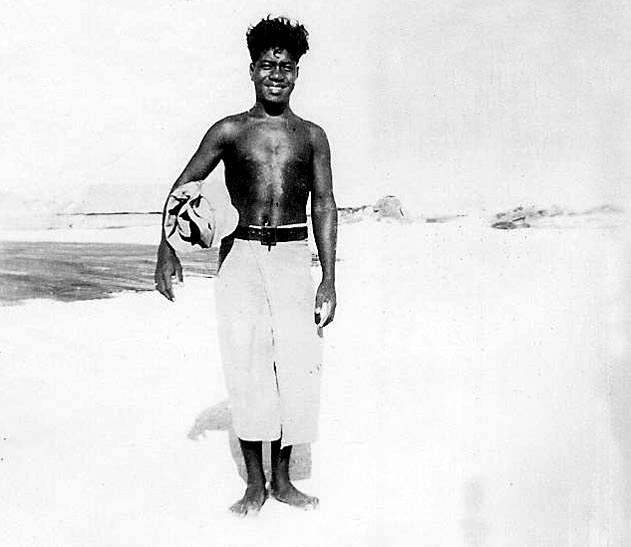|
|
||
|
|
||
|
|
JULY 1945 A daily summary of squadron activities for the month is provided below. Additional details for significant events may be found at the linked text. July 1, 1945: Two planes patrolled assigned shipping lanes. Three planes conducted sector searches operating from Eniwetok. One plane flew to Eniwetok and returned. July 2, 1945: One plane returned to Kwajalein from Eniwetok. Two planes patrolled assigned shipping lanes. Three planes conducted sector searches from Eniwetok. July 3, 1945: One plane flew a snooper mission over Kusaie, negative. One plane conducted a search of friendly atolls in the southern sector. One plane dispatched to Majuro on a hunter-killer mission, negative. Two planes patrolled assigned shipping lanes. One plane conducted a sector search operating from Eniwetok. July 4, 1945: One plane flew from Kwajalein to Eniwetok. Two planes flew assigned shipping lane patrols. One plane conducted a sector search operating from Eniwetok. One plane returned to Kwajalein from Majuro. July 5, 1945: Two planes patrolled assigned shipping lanes. One plane conducted a sector search operating from Eniwetok. One plane flew a hunter-killer mission from Eniwetok, negative. July 6, 1945: One plane flew a snooper mission over Kusaie, negative. Two planes patrolled assigned shipping lanes. Four planes flew a hunter-killer mission from Eniwetok, negative. July 7, 1945: Two planes patrolled assigned shipping lanes. Five planes returned to Kwajalein from Eniwetok. One plane flew a snooper mission over Kusaie, negative. July 8, 1945: Two planes flew assigned shipping lane patrols. July 9, 1945: Two planes patrolled assigned shipping lanes. One plane conducted a snooper flight over Kusaie, negative. July 10, 1945: One plane flew a friendly atoll search of the northeast sector. One plane flew a friendly atoll search of the northwest sector. Two planes patrolled assigned shipping lanes. July 11, 1945: One plane conducted a snooper flight over Kusaie. Two planes patrolled assigned shipping lanes. Two planes were dispatched from Kwajalein to Tarawa to assist in air-sea rescue flight, negative. July 12, 1945: One plane flew a search of friendly atolls in the south sector. Two planes patrolled assigned shipping lanes. Four planes, operating from Tarawa conducted an air-sea rescue search, negative. July 13, 1945: Three planes flew to Tarawa. Two planes patrolled assigned shipping lanes. Two planes conducted an air-sea rescue search operating from Tarawa, negative. July 14, 1945: One plane conducted a snooper flight over Kusaie. Two planes patrolled assigned shipping lanes. Two planes returned to Kwajalein from Tarawa. Two planes conducted an air-sea rescue search. Two planes flew a snooper and photo reconnaissance flight over Ocean and Nauru Islands operating from Tarawa (Aircraft Action Report 57). July 15, 1945: Three planes dispatched from Kwajalein to Tarawa. Two planes conducted patrols of assigned shipping lanes. One plane conducted a search of friendly atolls in the northeast sector. Two planes flew a snooper flight over Ocean and Nauru Islands from Tarawa (Aircraft Action Report 58). July 16, 1945: One plane flew a search of friendly atolls in the south sector. Two planes patrolled assigned shipping lanes. One plane flew a reconnaissance flight over Ocean and Nauru Islands. One plane flew from Tarawa to Majuro. One plane returned to Kwajalein from Tarawa. July 17, 1945: One plane flew a snooper flight over Kusaie. Two planes conducted patrols of assigned shipping lanes. One plane flew a snooper flight over Ocean and Nauru Islands. One plane returned to Kwajalein from Tarawa. One plane flew from Kwajalein to Majuro and returned. July 18, 1945: Two planes patrolled assigned shipping lanes. One plane flew from Kwajalein to Majuro and returned. One plane flew a snooper flight over Ocean and Nauru Islands. July 19, 1945: Two planes conducted patrols of assigned shipping lanes. One plane flew a snooper flight over Kusaie which was aborted due to mechanical difficulties. One plane flew a snooper flight over Ocean and Nauru Islands. One plane flew a friendly atoll search mission in the northwest sector. July 20, 1945: Two planes conducted patrols of assigned shipping lanes. One plane flew a snooper flight over Kusaie. One plane flew a snooper flight over Ocean and Nauru Islands. July 21, 1945: Two planes conducted patrols of assigned shipping lanes. One plane flew a snooper flight over Ocean and Nauru Islands. Four planes flew from Kwajalein to Tarawa. July 22, 1945: Two planes conducted patrols of assigned shipping lanes. One plane flew a snooper flight over Ocean and Nauru Islands. Four planes escorted six F4Us from VMF-155 to Nauru for a strike against small ships. July 23, 1945: One plane flew a snooper mission over Kusaie. Two planes conducted patrols of assigned shipping lanes. Four planes returned to Kwajalein from Tarawa. One plane flew a snooper flight over Ocean and Nauru Islands. July 24, 1945: One plane flew a northwest sector search of friendly atolls. One plane flew a search of friendly atolls in the northeast sector. Two planes conducted patrols of assigned shipping lanes. One plane flew from Kwajalein to Tarawa. One plane conducted a snooper flight over Ocean and Nauru Islands. July 25, 1945: Two planes conducted patrols of assigned shipping lanes. Four planes returned to Kwajalein from Tarawa. One plane conducted a snooper flight over Kusaie. One plane conducted a search of friendly atolls in the southern sector. One plane provided an escort from Kwajalein to Roi. July 26, 1945: One plane provided an escort from Roi to Eniwetok. One plane returned to Kwajalein from Eniwetok. Two planes conducted patrols of assigned shipping lanes. July 27, 1945: One plane flew a snooper mission over Kusaie. Two planes conducted patrols of assigned shipping lanes. July 28, 1945: Two planes patrolled assigned shipping lanes. Five planes flew from Kwajalein to Majuro. Operating from Majuro, four planes conducted a strike on Wotje Atoll (Aircraft Action Report 59). July 29, 1945: One plane flew from Majuro to Kwajalein. Two planes conducted patrols of assigned shipping lanes. July 30, 1945: Two planes patrolled assigned shipping lanes. One plane performed a search of friendly atolls in the northeast sector. Six planes conducted a strike against Maloelap Atoll (Aircraft Action Report 60) and (Aircraft Action Report 61). July 31, 1945: Two planes patrolled assigned shipping lanes. One plane flew from Kwajalein to Majuro and returned. Operating from Majuro, four planes conducted a strike against Wotje Atoll and returned to Kwajalein upon completion of the mission (Aircraft Action Report 62).
MB-8 ON PATROL: MB-8 (BuNo 35264) conducts another of the numerous sector searches that were performed by VMB-613. This particular aircraft was named "8-Ball"—a name credited to its copilot, First Lieutenant Robert F. Litzau. Photograph: U.S. Marine Corps (Courtesy of Frank E. Acker)
EMIDJ ISLAND: Taken from one of VMB-613's aircraft as it flew over Emidj Island, Jaluit Atoll. Although heavily bombed, the U.S. Strategic Bombing Survey (USSBS), conducted at the war's end, found that the Japanese on Jaluit Atoll still had 44 operational anti-aircraft guns, as well as plenty of ammunition. Morale and discipline of the Japanese garrison on Jaluit, under the command of Rear Admiral Masuda remained high throughout the war. Upon the surrender of Japan, Masuda killed himself rather than to face questioning about the execution of American prisoners of war. Photograph: U.S. Marine Corps (Courtesy of William A. Kehr)
LOADING ROCKETS: Two VMB-613 armorers load 5-inch Forward Firing Aircraft Rockets (FFARs) onto a PBJ-1H's under-wing rocket mounts. These weapons were unguided and consisted of a 5-inch warhead attached to a 3.5-inch rocket motor. Post-war survey results showed that aircraft rockets were not very effective against Japanese concrete reinforced bomb shelters and gun emplacements. Photograph: U.S. Marine Corps (Courtesy of William A. Kehr)
RETURNING TO MAJURO: Approaching their airstrip on Majuro, a flight of Marine F4U Corsairs returns following a strike on one of the bypassed Japanese held islands. VMB-613 frequently escorted F4Us and SB2Cs on these strikes as single engine aircraft could easily get lost on over water flights due to the lack of adequate navigation equipment. Photograph: U.S. Marine Corps (Courtesy of William A. Kehr)
ROI ISLAND AIRSTRIP: The airstrip on Roi is clearly visible on the upper-right. Marine F4Us and SB2Cs were based at Roi, and can be seen lined up in the lower center. The narrow strip on the lower right is a causeway that leads to Namur Island. Photograph: U.S. Marine Corps (Courtesy of William A. Kehr)
BENNETT ISLAND: Just to the north of the eastern inlet to Kwajalein Atoll lies Bigej Island. As its Marshallese name was too difficult to pronounce, it was simply referred to as "Bennett Island." Bennett Island served as a location for those based at Kwajalein Atoll to go for short periods of rest and recreation. Although there were none of the usual conveniences of a resort, there was plenty of beer. Squadron members can be seen enjoying a cookout, beer, and the company of their fellow Marines. Photograph: Marine Bombing Squadron Six-Thirteen (Courtesy of Paul J. Yanacek) COOKOUT: A group of ordnance Marines prepare steaks during a cookout on Bennett Island. Those pictured are: (Foreground) Staff Sergeant Frank E. Acker; (Background L-R) Sergeant William E. Hartman, Staff Sergeant Robert W. Shock, and Staff Sergeant Paul J. Yanacek. The identity of the Marine in the foreground on the right is unknown. Photograph: Marine Bombing Squadron Six-Thirteen (Courtesy of Paul J. Yanacek)
COOKOUT: On July 29, 1945 this group of squadron members enjoyed some rest from their normal work routine on Bennett Island. Although beer and steaks were made available, there was no escape from the usual Marine Corps "chow lines." Photograph: U.S. Marine Corps (Courtesy of Nathan LaRicca)
JAPANESE 8-INCH GUN: A Japanese 8-inch costal defense gun on Betio, Tarawa Atoll. There were several of these gun batteries on Betio, all which were put out of action by Naval gunfire prior to the Marines landing during November 1943. A common myth is that they were British guns that were captured at Singapore, then moved to Betio. In reality, although they were indeed British-made guns, they had been sold to Japan many years before the Second World War. Photograph: Marine Bombing Squadron Six-Thirteen (Courtesy of William A. Kehr)
JAPANESE SEARCHLIGHT: Part of Japanese defenses, this concrete structure and searchlight was located on Eniwetok or Betio. Since Betio was so heavily defended, it is believed that this structure was on Eniwetok since it would have been unlikely to survive the intense naval bombardment that Betio received. Photograph: Marine Bombing Squadron Six-Thirteen (Courtesy of William A. Kehr)
GILBERT ISLANDER: A Gilbertese native taken on Tawara Atoll. Prior to the war, Tarawa had been a British colony. Upon the arrival of the Japanese, British Subjects, including missionaries, were rounded-up and summarily beheaded. The Gilbertese natives were driven from the main island of Betio and remained under the harsh and brutal Japanese rule until liberated by U.S. Marines in November of 1943. Photograph: U.S. Marine Corps (Courtesy of William A. Kehr) |
|
|
Copyright © 2008 Marine Bombing Squadron Six-Thirteen Association. All Rights Reserved. |
||
